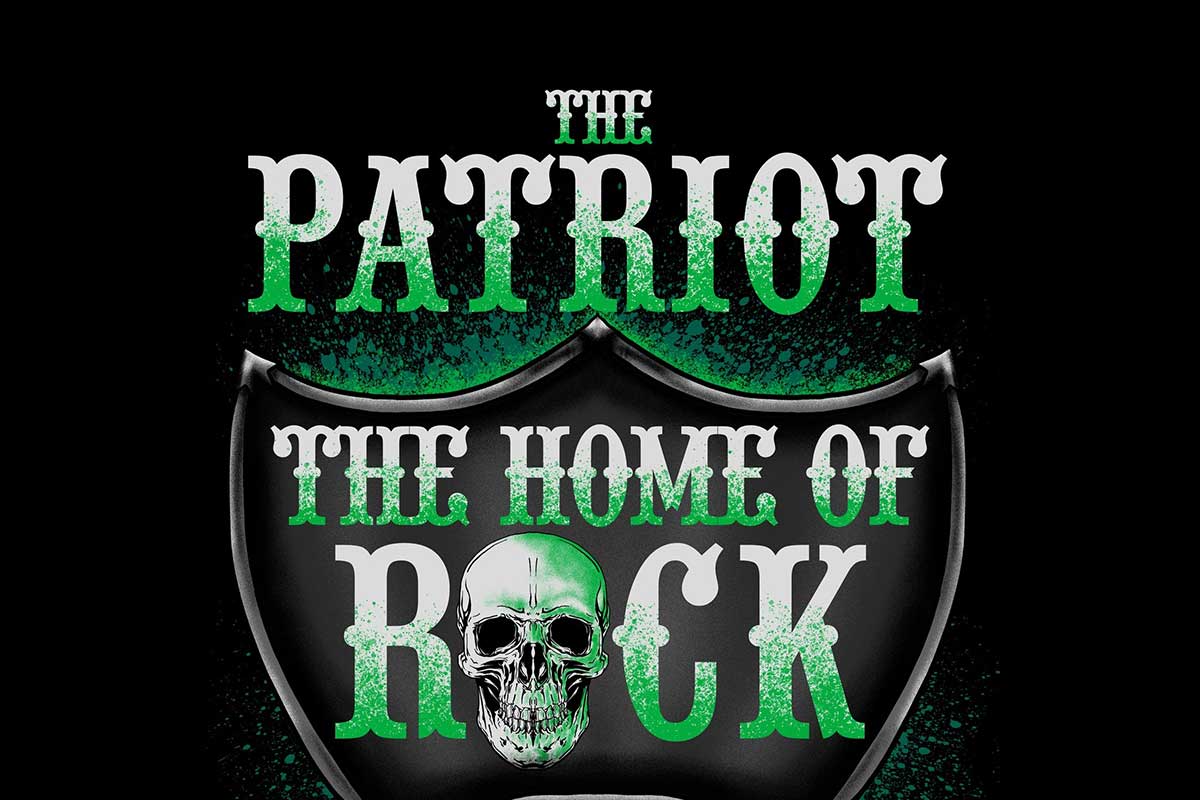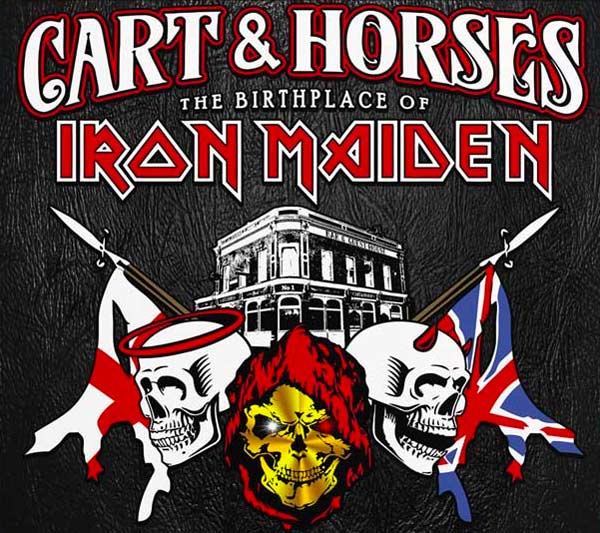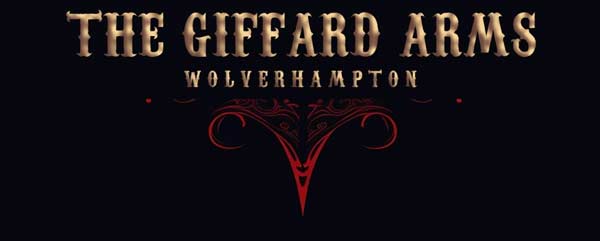Well, boys and girls, as we enter the merry month of Maiden, I have been charged with waxing loquacious about the 20 greatest Iron Maiden tracks of all time. Now, being an Iron Maiden fan, this was never going to be a straightforward endeavour for me. This, in part, is because although I love the usual tracks, there is so much more to Iron Maiden than the obvious choices.
Personally, I like some of their deeper cuts, which will immediately put me at odds with many other Iron Maiden fans. Let’s face it. With 197 recorded tracks, including 20 covers, this is not an easy task.
I am a firm believer that there is a stark difference between what is popular and what is considered to be great. Even Crazy Frog managed to get to Number 1 with what was, ultimately, one of the biggest piles of faecal matter ever recorded.
You are probably going to WTF when you see some of the tracks omitted and some that are included. But there are reasons for their omission.

To highlight the disparity between my Top 20 and other fans’ Top 20, I drafted in some help to the tune of five chaps who are also die-hard fans of the band. Mat Jeary, Mark Inman, Scott McCallum, Mike Clipson and Kevin Bibby all pretty much put similar tracks in their list.
Although, there were a couple of odd ones in there and a couple of instrumentals, too. This highlighted the overt subjectivity of the question posed.
Therefore, without further ado, let’s open up this can of worms, and god help me on this one because I am likely to get put in the stocks and have rotten fruit lobbed at me.
Still, it’s all part of my five-a-day, so here goes.

20. Strange World (Iron Maiden)
This is possibly the most un-Iron Maiden song you will ever hear. Now, I must be honest. I never really particularly cared for this song. In fact, I used to skip past it on the first album and anywhere else it appeared. I just didn’t particularly like it.
I went years without hearing it, and then I heard it at Paul Di’Anno’s funeral. While I had mellowed in my attitude towards it after hearing it, I then got a further blast of it in a unique cover version of it by Airforce. It was at that point I realised that it was a truly great song and my attitude towards it was completely wrong.
If this song were an animal, it would be a sweet little lamb climbing up onto its hind legs and asking for a cuddle. Now, ordinarily, you would expect Eddie to then rock up with a set of butcher knives, a barbecue and the jar of mint sauce, as Iron Maiden temper the tenderness with some screeching and wailing axe-manship. But they don’t do that.
The tempo of the song does speed up quite considerably during the guitar solos but reverts back to its understated, serene tempo. Almost 50 years on, it’s only now that I’ve started to truly appreciate how great a song this truly is, and it now also has the honour of being the tribute song as Paul Di’Anno was laid to rest – it’s a thing of beauty.
19. Infinite Dreams (Seventh Son Of A Seventh Son)
Now, I have to be honest here. Although it is a great album, I was never a massive fan of Seventh Son Of A Seventh Son. However, this track is a bloody corker from the pen and bass of Steve Harris.
The track is about how the character of the song sees disturbing visions about the afterlife. Opening with soft, Hendrix-esque fretwork, Bruce Dickinson enters the fray with a gentle melodic narration before the rest of the band launches into action.
Despite its relatively restrained opening, the track gets progressively heavier towards the song’s climax and the following final verse. This track is well deserving of a place in the Top 20.
18. The Clansman (Virtual XI)
Blaze Bayley does not get enough credit for his time in Iron Maiden – there, I’ve said it.
The Clansman is a 9-minute Steve Harris masterpiece, beautifully sung by the Wolfsbane vocalist. The song deals with the Scottish struggle for independence and freedom from English oppression in the XIII and XIV centuries.
From its gentle opening fretwork and use of the hi-hat, you immediately hear a Celtic influence. Then enters some melodic bass-playing from Steve Harris before Blaze Bayley’s Baritone vocals kick in.
Chants of “FREEDOM, FREEDOM” echo through the song, emulating Mel Gibson’s William Wallace in Braveheart.
There’s plenty of great fretwork between Dave Murray and Janick Gers, along with a not unsubstantial amount of synth-work. In fact, this is probably their most synth-heavy track since the title track of Seventh Son Of A Seventh Son.
17. Twilight Zone
Oh no, not another curveball – oh yes. Now, this track deserves a hell of a lot more credit than it has ever received. Lyrically, it is a great song, focusing on eternal sleep from the dead person’s perspective. It’s a very clever piece of work.
Musically, it’s got the same opening riff as Powerslave’s Losfer Words but a little quicker. Curiously, it’s never featured on any Iron Maiden album, mirroring Sanctuary and Total Eclipse. This, to me, is an oversight due to the fact that this song typifies the Di’Anno era. So it gets its place in the Top 20.
16. Die With Your Boots On (Piece Of Mind)
With its twin guitar opening riff, neat drum fills and driving bassline, the Smith, Dickinson, Harris written track tackles the subject of self-fulfilling prophecies and the vision of an apocalyptic future. Lightweight stuff, eh?
It bears a lot of similarities with Two Minutes To Midnight in its construction and, to some degree, lyrical content. Both are fabulous tracks, but I feel that Die With Your Boots On has the edge.
15. Writing On The Wall (Senjutsu)
With its acoustic opening and almost Celtic following riff, this is an unexpected gem. This is definitely a guitarist’s song, accentuated with a great vocal performance and some great lyrics, and the solos are exquisite.
There are some that don’t rate Maiden’s later offerings as highly as their earlier work. But why? Iron Maiden are an evolving entity, and this song typifies that.
14. Running Free (Iron Maiden)
What can I write that hasn’t already been written about this track? Anthemic, a punk/Metal crossover, signature tune, blah blah blah.
Look, if you are reading this and don’t know much about Iron Maiden, then this is one of those songs you need to listen to, both the live versions with Paul Di’Anno and latterly with Bruce Dickinson. It is quintessentially early Maiden, from Doug Sampson’s opening drum pattern on the earliest recordings of the track to Steve Harris’s ultra-catchy bassline.
The song itself is not massively complicated, but it’s a perfectly executed piece, and it stands the test of time.
13. Aces High (Powerslave)
So, we go from World War I to World War II. Now, interestingly, there is a film produced in 1976 also called Aces High, starring Malcolm MacDowell, Christopher Plummer and Simon Ward, telling the story of World War I fighter pilots. So when I saw this track on the Powerslave album, I initially thought that the song was about the film – I was wrong.
This track is a complete classic. The tale of World War II fighter pilots in their Spitfires and Messerschmitts? What’s not to love? It’s fast and furious throughout the entire song but not a note is wasted.
Preceded by Churchill’s speech (come on, you know the one) during both live performances and on the Powerslave album itself, the guitars almost sound like they are the engines cranking up before the propellers fully engage at break-neck (or decapitation) speed.
With Steve Harris’s bass growling underneath the twin-guitar attack, you can almost feel the Spitfires tearing down the runway. Between Bruce’s soaring vocals and Murray and Smith’s guitars diving and rising, you get that sense of excitement and urgency.
There are a number of Iron Maiden songs which do emulate the pattern of this particular song, Tailgunner, Speed Of Light, Death Or Glory and The Final Frontier, to name but four. However, nothing even comes close to this track.
12. Paschendale (Dance Of Death)
Written by Adrian Smith, this is a bit of an unusual one for ‘H’. Generally contributing to Maiden’s shorter, more commercial numbers, this little gem chimes in at an impressive 8 minutes and 27 seconds. This track is more of a prog-rock vehicle than a traditional Heavy Metal number.
From Nicko McBrain’s rhythmic taps on his hi-hat, seemingly emulating Morse code, to the melodic opening riff from a single guitar, which then gets smashed apart by a thunderous blast from the interjecting band, you know the track is going to be epic.
With thoughtful, even upsetting lyrics, this isn’t just a song – it’s a highly abbreviated vision of the futility of war. In fact, when featured during their live set, Iron Maiden opened this track with a passage from Wilfred Owen’s Anthem for Doomed Youth.
Again, not an obvious choice in a list of Top 20 tracks – but hey, it’s a great track.
11. Revelations (Piece Of Mind)
“Music this good should not ever be played by a Heavy Metal group,” said nobody, ever.
With the first verse being an excerpt from a hymnal written by G. K. Chesterton (1874 -1936), the song, written by Bruce Dickinson, is actually in several parts, dealing with religion, mysticism and prophecy.
Despite being cryptic, with its references to Aleister Crowley, the Hindu faith and aspects of Christianity, which diametrically oppose some aspects of Hinduism, you come to realise it’s a bloody clever song which is worthy of further investigation from a lyrical perspective.
Musically, it’s a masterpiece, in my opinion, much better live than recorded. In fact, the Live After Death version, instrumentally, has much more power and punch than the recording on Piece Of Mind. I would suggest it is down to the way Murray and Smith’s guitars interact on the live stage.
Whichever version you prefer, live or recorded, it is a track worthy of entering into anybody’s Top 20.
10. Sea Of Madness (Somewhere In Time)
This is another underrated song off of the Somewhere In Time album. The clanking bassline is a heavy feature on this track, which gives it an unusual, loose feel to it.
A great opening riff followed by a great drum fill permeates through the thread of Sea Of Madness before a synth kicks in, leading to a harmonised chorus.
Then, the solos. With Steve Harris breaking away from the driving bass to something so utterly melodic, it’s a thing of beauty. I’ve heard this bassline isolated, and my jaw dropped at how complicated it actually is. It is a work of art that is a musical masterpiece.
9. Murders In The Rue Morgue (Killers)
This is easily the best track on the Killers album. The drumming is the real driving force behind this track. I’ve heard Clive Burr, Nicko McBrain and Simon Dawson all play this live, and they are all great, but all play it slightly differently.
For me, it’s Clive’s version on the drums which sets this whole song up. The sheer speed is absolutely exhausting to listen to, let alone play. The harmonisation between the guitars is also a massive feature within the song.
Emulating a few of its counterparts on the first two albums, it has got that punk feel to it which is accentuated by the rasping, snarling vocals emanating from Di’Anno.
8. Number Of The Beast (Number Of The Beast)
How can this not feature on a Top 20? The stand out for me on this track isn’t the guitar work nor the vocals. It’s the bass and drums. Clive Burr’s drumming is so incredibly tight with Steve Harris’s bass. They are almost like Siamese twins.
The bass line itself is initially quite straightforward, but that all changes during the chorus and subsequent guitar solos. ‘Arry comes across as a frustrated lead guitarist on this track and it really does enhance the song.
It’s Geddy Lee, it’s Burke Shelley, it’s Pete Way. I believe that it’s this track that cemented Maiden’s founder as one of the greatest bass players on the planet.
A word about Bruce’s vocals that scream at the beginning? I believe there are a few castratos out there who want a quiet word with Bruce as to how he got a scream that high-pitched and still managed to keep his conkers.
7. The Wicker Man (Brave New World)
It could be argued that this is the updated and enhanced version of The Prisoner. Two decades after the aforementioned track made its first appearance, it shares many of the attributes that The Prisoner possesses.
With a great riff, catchy chorus and some fabulous fretwork from the three axemen, the only reason this falls just below The Prisoner is that it isn’t lyrically as strong. But it’s still fantastic.
Now, you may question why The Prisoner and The Wicker Man both feature, but The Trooper and Run To The Hills do not feature together in this list.
This is because although they are quite similar, there is enough of a difference to detach them from each other. Also, there is a much greater time difference between the production of the two tracks.
6. The Prisoner (Number Of The Beast)
For me, this is the best track from the Number Of The Beast album. The song, which is about the main character in the TV series of the same name, has everything with a great opening that any self-respecting air guitarist would be strumming and moshing to (come on, Steve Loopy Newhouse, let’s see some shapes).
It does not just stop at a great opening. A swift time change takes you into a really aggressive, almost visceral verse before another time change takes you into a rousing chorus.
It has everything that a great song should have and even has a follow-up with Back In The Village from Powerslave.
5. The Trooper (Piece Of Mind)
Look, I’m not even going to bother explaining to you what this song is about because if you don’t know by now, you must be a Taylor Swift fan.
With the customary galloping bass line from Steve Harris and soaring Bruce Dickinson vocals, it’s got to feature in any Top 10, let alone Top 20.
Now, here’s the thing. I could not put this AND Run To The Hills together in a Top 20. This is primarily because, from a musical perspective, they are quite similar.
With powerful drumming and the aforementioned triplet-imbued bass, as well as the lyrical subject matter, one had to make way.
4. Rime Of The Ancient Mariner (Powerslave)
At 13 minutes and 45 seconds, this track lasts longer than I do with a packet of Jammy Dodger biscuits.
Based on Samuel Taylor Coleridge’s poem of the same name (as if you didn’t know), with its time changes and mood changes, it was always going to be an oddity from the Iron Maiden camp. It’s certainly something very different.
With the band under serious time constraints, the piece was written in a relatively short space of time, according to writer Steve Harris. Again, the guitars stand out, and the two differing styles between Murray and Smith enhance this track.
It’s a twin guitar attack dream.
3. Stranger In A Strange Land (Somewhere In Time)
Adrian Smith took inspiration for this song after talking to an Arctic explorer who had discovered the frozen body of Franklin Expedition participant John Torrington.
The piece is mid-paced, which suited Smith as it gave him a more expansive field to work on the guitar solo within the track.
What is noticeable is the restrained Steve Harris’ bassline. Not a note is wasted….until the guitar solo starts. At that point, Harris engages in the unexpected and performs a solo underneath Smith’s solo.
It works beautifully and, in my opinion, is worthy of the Number 3 spot.
2. Powerslave (Powerslave)
The song from the album of the same name. I feel that this track was built on the rock-solid foundations of Phantom Of The Opera, had the rough edges taken off and honed into a 7-minute and 12-second work of audiological artwork.
The Dickinson written track was astonishing from a lyrical perspective, completely “out-there”, with the song generally considered to be an allegorical tale about Bruce Dickinson’s life as a rock star.
The solos on the track are top-notch. In fact, I sometimes stop the track and re-listen to the solos. Murray and Smith are in exquisite form on this track.
1. Phantom Of The Opera (Iron Maiden)
This song, to me, was the start of my Iron Maiden journey. Loud, raucous, it’s punk (sorry, ‘Arry, it is), it is prog rock, it is Speed Metal, it is everything that you want in a great Metal song.
If Bohemian Rhapsody epitomised Queen, Phantom Of The Opera is the very definition of what Iron Maiden were at that period in time and still are.







No Hallowed Be Thy Name or Wasted Years is kinda mind-blowing. But fun list.
Been a Maiden fan ny whole life. I actually think this list is pretty good. Sure, there are a few in there I’d argue. But I can appreciate the perspective. And there are definitely some gems on this list list that I absolutely love and agree they can be overlooked by some of the faithful. Up The Irons!
What? No fear of the dark? Blasphemy
Love – finally recognition of Phantom of the Opera which has been my favourtite for years. I even learnt to play it on guitar – masterpiece!
No hallowed be thy name of fear of the dark!? 🫨
Most of those wouldn’t make my top 20. I think the person who composed this list has done those to be controversial.🤣🥰..
Maiden,s Best Song Is Children Of The Dammed , They’re Greatest Album Is, Peace Of Mind!!
Haha. The Prisoner wouldn’t even make my top 190. Hallowed be thy Name is the best Maiden song. End of. But Ilike the idea of some of the alternatives put forward.
No Hallowed be thy name, Fear Of The Dark, The Evil That Men Do I personally wouldn’t include anything after Brave New World.
I have been a Maiden fan since 1981. I think this is a great list. I disagree with maybe 5 songs on the list.
Flight of Icarus?
I’m a Paul guy so I would replace the newer stuff with Purgatory, Innocent Exile, Wrath child, Charlotte The Harlot, and Prowler but I’m sure every long time fan has different lists there’s so many to choose from.